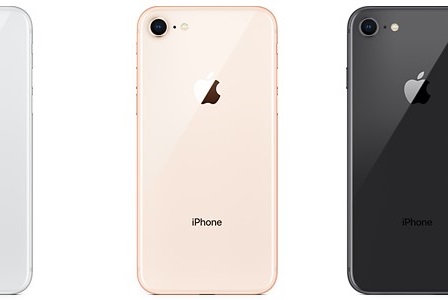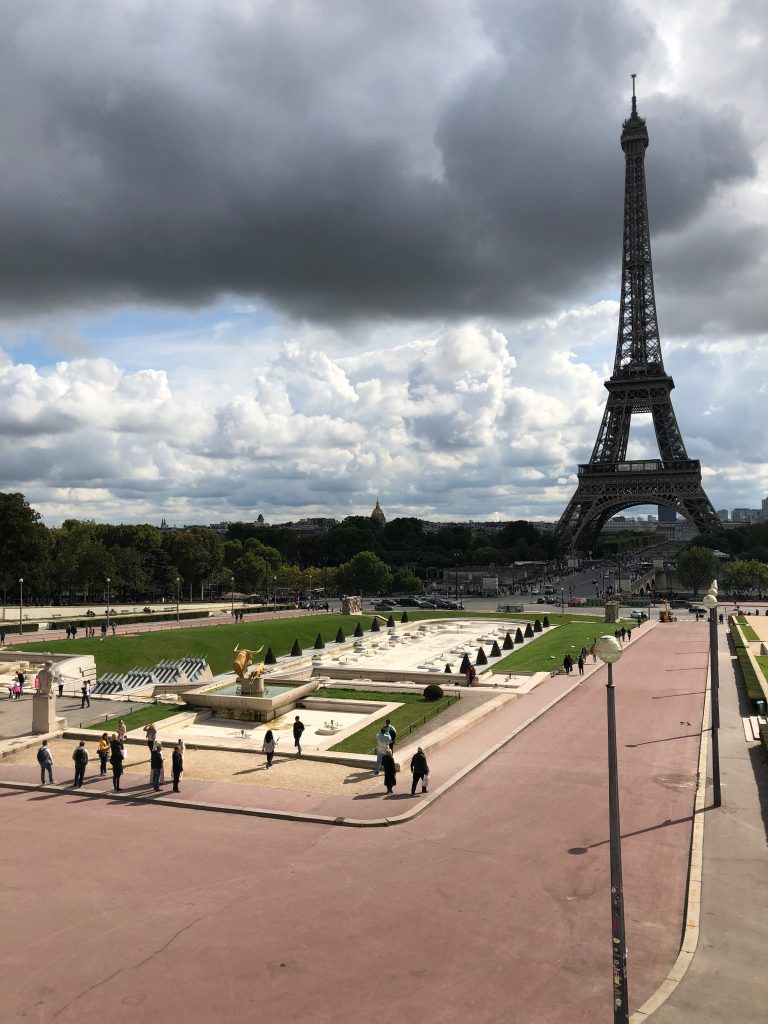The Apple iPhone 8 is the highest-performing single-camera smartphone we have tested with our new protocols, with an impressive Overall score of 92. Despite having a smaller 1/2.8-inch sensor, it edges out our previous top scorers, the HTC U11 and the Google Pixel. This demonstrates how much Apple has been able to accomplish with the hardware and software that complement the sensor and are used for image processing. The iPhone 8 also provides major improvements over the iPhone 7 in a number of areas, including capturing HDR images, as well as flash performance.
Key camera specifications:
- 12MP main (wide-angle) camera with BSI sensor, f/1.8 lens
- Optical image stabilization
- Quad-LED True Tone flash with Slow sync
- Autofocus with Focus Pixels
- Wide-gamut color capture
- Body and face detection
- AutoHDR
Test summary
The Apple iPhone 8 is one of the best-performing mobile device cameras we have ever tested at DxOMark. Its overall score of 92 puts it ahead of every smartphone camera we’ve tested other than its larger and more expensive sibling, the iPhone 8 Plus.
Because the main camera on the iPhone 8 is identical to the one on the iPhone 8 Plus, we have covered both phones, including comparison images, in our iPhone 8 Plus review. Only the Zoom and Bokeh capabilities provided by the Phone 8 Plus’s second camera give it a major advantage over the iPhone 8. For a detailed review of how the iPhone 8 camera performs, please read our review of the iPhone 8 Plus. However, we’ll cover the scores for the iPhone 8 and recap some of its highlights here as well.
Bright light
Images captured outdoors with the iPhone 8 are generally stunning, with excellent detail preservation, accurate color, and impressive dynamic range. The iPhone 8 builds on the outstanding performance of the iPhone 7 family with its excellent performance in bright light. In particular, it has improved exposure calculation, and excellent ability to capture HDR (High Dynamic Range) scenes.

In this scene, the iPhone 8 avoids blowing out the highlights in the sky, while still preserving the blue sky and the details in the shadows at street level.
Low Light and Flash
Low Light: The iPhone 8 handles low-light conditions very well, with or without flash. Scenes such as this image captured in a subway are well-exposed, with good detail.
Flash: Images look good overall, with accurate exposure and white balance.
Video
Apple continues to up its game on video. With a score of 90, the iPhone 8 has the best Video quality of any Apple device, starting with the best exposure calculation. There is still room for improvement, however, as the iPhone 8 is still tied with the HTC U11 and is still behind the the Google Pixel’s 91. Looking at sub-scores, the iPhone 8’s stabilization is excellent and its color rendering is very accurate; furthermore, it does an excellent job of face tracking when shooting video in bright light.
Photo scores explained
Our Overall Photo score for the iPhone 8 is a composite of a number of category sub-scores: Exposure and Contrast (89), Color (77), Autofocus (83), Texture (65), Noise (69), Flash (81), Artifacts (83), Zoom (31), and Bokeh (25). (For details, refer to our iPhone 8 Plus review about the nearly identical sub-scores for all categories except Zoom and Bokeh.)
Video scores explained
The Apple iPhone 8 achieves a total Video score of 90. As with the photo scores, this is calculated from the sub-scores it achieves in a number of categories of tests that help define its overall video capabilities, specifically: Exposure and Contrast (81), Color (86), Autofocus (87), Texture (51), Noise (70), Artifacts (81), and Stabilization (90). For more details, please read our iPhone 8 Plus review, as the two phones use the same camera for Video, except for zoom that is not covered in the video side of our protocol.
Conclusion: New record for single-camera smartphones
While we haven’t retested every smartphone using our new protocols, we have retested some of the best, and the Apple iPhone 8 improves over all of them, including the Google Pixel and the HTC U11 — the two best performers until now. Apple has brought some impressive image processing technology to bear on the images that the iPhone 8’s relatively small sensor captures, and it shows in better exposure, improved dynamic range, and lower noise than the iPhone 7. Only its bigger and more expensive dual-camera sibling, the Apple iPhone 8 Plus, tops it on our DxOMark Mobile charts.


Pros
- One of the best HDR performances of any device we have tested
- Very accurate autofocus
Pros
- Very good stabilization
- Best exposure of any Apple device, but still not industry-leading
- Very good color rendering under almost all lighting condtions
- Good face tracking in bright light
Cons
- Color cast in low and indoor (tungsten) lighting
- Some autofocus delays in both bright and low light
Cons
- Some exposure issues in low light
- Visible noise in low-light conditions
A note about image formats for this review: The iPhone 8 and 8 Plus record photographs in the DCI-P3 colorspace, which their displays also use. DCI-P3 is newer and larger than the sRGB color space that most devices use and most web browsers assume. So to ensure that the images we used in the review display properly on a wide variety of browsers and devices, we converted the originals from DCI-P3 to sRGB using Photoshop (which is why the published test photos show Photoshop as the creator). This can slightly reduce the richness of color in some cases from what you would see when viewing the original images on a DCI-P3-calibrated display with appropriate software. We also captured the original images using the new HEIF (High-Efficiency Image Format), but then converted them to very high-quality JPEGs for viewing in standard browsers and image editing software. (HEIF is very similar to JPEG, but provides better compression for similar image quality, so the conversion makes the sample image file sizes larger than they were when shot.) Please note, however, that unlike our test images, some of the comparison photos used in this review were shot in JPEG and used as-is for illustrative purposes, and were not used to compute scores.





DXOMARK encourages its readers to share comments on the articles. To read or post comments, Disqus cookies are required. Change your Cookies Preferences and read more about our Comment Policy.